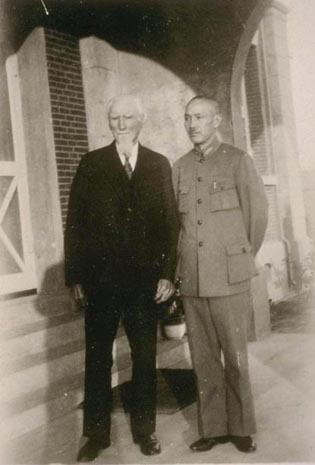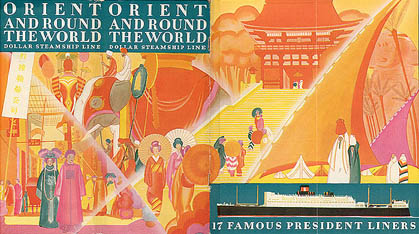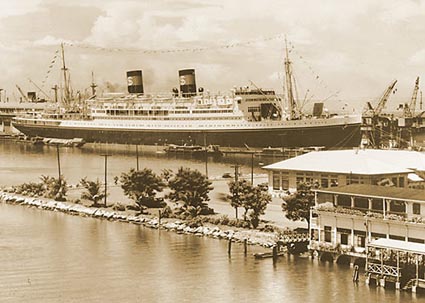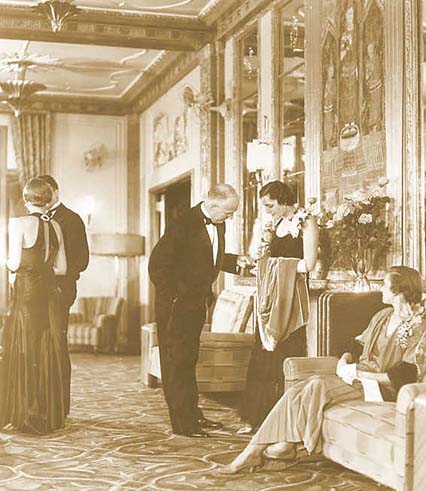|
|||||
|
|||||
|
Part One: Robert Dollar and the SS President Hoover |
|||||
|
Just after midnight in the early hours of 11 December 1937, one of the world's most luxurious cruise liners ran aground on Hoishoto Island (now Green Island) off the east coast of the Japanese colony of Formosa. The American ship was en route from Kobe in Japan to Manila in the ex-US colony of the Philippines. Her name was the SS President Hoover, a jewel in the crown of the Dollar Steamship Line. A few days later the SS President Hoover was declared a total loss. This is her story and the story of the man behind her. |
|||||
| The
Beginning of the Story: Robert Dollar
The story of the SS President Hoover begins with the story of the Dollar Steamship Lines. And the story of the Dollar Steamship Line belongs to the remarkable story of Robert Dollar. Robert Dollar (pictured on the right) was born at Falkirk in Scotland in 1844. At the age of 13, in 1857, he emigrated to Canada with his family and soon began working in a lumber camp as a cook's helper. Dollar used his time at the lumber camp to learn French and to learn how to keep the camp's accounts. By the age of 22 he was placed in charge of the lumber camp, and in 1872 he was able to purchase his own lumber camp. Though his first venture was a failure, Dollar persevered and achieved great success in the lumber business, first in Canada, then in Michigan, and finally in northern California. There, in 1888 at San Rafael, Robert Dollar settled with his wife Margaret Proudfoot, whom he had married in 1874. From his base in San Rafael, Dollar began buying lumber tracts and camps up the coast to Oregon and as far north as British Columbia. In 1895 Dollar purchased a steam schooner to transport his lumber down the Pacific coast to San Francisco. And so began his second career as a shipping magnate. |
Robert Dollar (1844 - 1932) |
||||
|
Robert Dollar & Chiang Kai-shek |
By 1901 Robert
Dollar had established the Dollar Steamship Company and in the following
year he undertook the first of his some 30 trips to Asia to develop trade across
the Pacific.
Dollar is regarded as the pioneer of the US-China trade. Despite being in his seventies, Dollar had soon built up an extensive trading business between the Orient and the United States, and also built up some important relationships (see picture on left with Chiang Kai-shek). In 1920 Dollar expanded his cargo shipping service to provide a round-the-world service that operated on a strict schedule, which was an innovation at that time. In 1924 he introduced a round-the-world passenger service that was the first to publish scheduled departure and arrival times. Robert Dollar became known as the Grand Old Man of the Pacific and appeared on the cover of Time magazine on 19 March 1928. When Dollar died on 16 May 1932, at the age of 88, he left a fortune of 40 million US dollars. More than 30,000 people attended his funeral, including foreign dignitaries, government officials, business associates, friends and family. The Californian Governor, James Rolph Jr, eulogized that "Robert Dollar has done more in his lifetime to spread the American flag on the high seas than any man in this country". |
||||
| The Dollar
Steamship Line
Dollar had lived long enough to see his creation, the Dollar Steamship Line, reach its greatest heights. The Dollar Steamship Company had changed its name to the Dollar Steamship Line in 1929, and now set about a huge expansion of its fleet. Ominously, 1929 was also the year that heralded in the Great American Depression. As part of the expansion, the Dollar Line decided to build two identical liners to service the trans-Pacific sector of the passenger market. Their names were to be the SS President Coolidge and the SS President Hoover. |
A Dollar Steamship Line Brochure |
||||
| The SS
President Hoover
Line Drawing of the SS President Hoover (Hull No 339) |
|||||
|
On 26 October 1929 the Dollar Steamship Line had placed an order with
the Newport News Shipbuilding and Dry Dock Company in Virginia to build
the two, nearly identical, liners. The first to be delivered was to be the SS President
Hoover.
The SS President Hoover was eventually to cost nearly 8 million US dollars to build, although, somewhat controversially, the US government had provided a loan of some 2.5 million US dollars towards the construction. The US government loan was made on the understanding that the ship would carry the US postal mails across the Pacific. |
|||||
|
The SS President Hoover, designed by Carl Petersen, was launched on 9 December
1930 by Mrs Herbert Hoover. Robert Dollar lived just long
enough to witness this crowning moment in his career, and, upon
inspecting the fully fitted-out ship on 6 August 1931, declared simply,
"This ship is a wonder".
The SS President Hoover was 654 feet 3 inches long, 81 feet wide, 34 feet deep, and with a gross tonnage of 21,936 tons. Although not that big in comparison with liners being built in Europe at that time, the Hoover was the largest passenger ship to be constructed in the United States. The Hoover was propelled by a twin screw, steam turbo electric drive manufactured by the General Electric Company, supported by 12 Babcock & Wilcox high pressure boilers, heated by fuel oil. This propulsion set up developed 26,500 HP at 133 RPM, enabling her to cruise at around 20 knots. |
SS President Hoover at Manila |
||||
|
Hoover First Class Lounge 1932 |
The Hoover was primarily designed as a luxury passenger liner, though
she also had seven cargo holds, including one that was refrigerated and
another that was capable of carrying 100 cars. She was designed to carry 324 crew
and a maximum of 990 passengers, with 380 in a Steerage Class and
between 214 to 307 in First Class, depending on the configuration.
The First Class passengers, at least, were sumptuously provided for. The plush accommodations and Art Deco furnishings on the upper decks of the SS President Hoover rivalled that of the best hotels of the era. The Hoover's First Class Lounge, shown on the left, was decorated with murals by the New York artist Frank Bergman. There were Otis electric elevators for convenience; a swimming pool and air-conditioning for the hot days; and heaters in every room for the colder nights. The SS President Hoover was a crowning achievement for the Dollar Line, and must have represented a dream come true for the seasoned traveller Robert Dollar, who was suitably awestruck when he toured the boat some ninth months before his death. |
||||
|
|
|||||
|
The luxury and elegance of the SS President Hoover was always in stark
contrast to the hard times of the Great Depression. The Dollar Line was particularly
hard hit by increased US government regulation of the shipping industry
and rising operating costs in a weak market. The US maritime labour
disputes of the late 1930s were to have a further damaging effect
on the company. Meanwhile political events were fast unfolding in China
and Asia that would lead to the Second World War. For the SS President
Hoover troubled days lay ahead.
See Part Two: The Wreck of the SS President Hoover |
|||||
|
|||||
|
|||||





